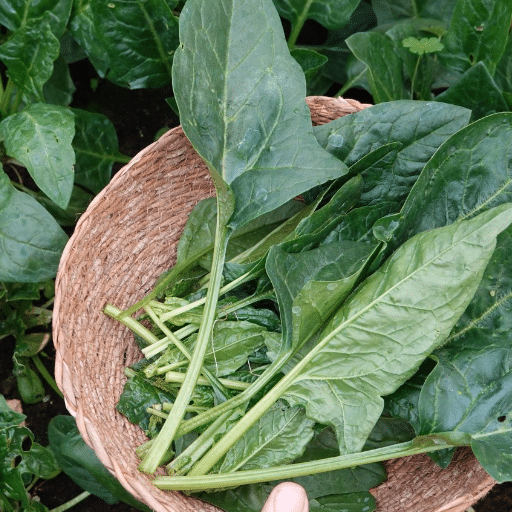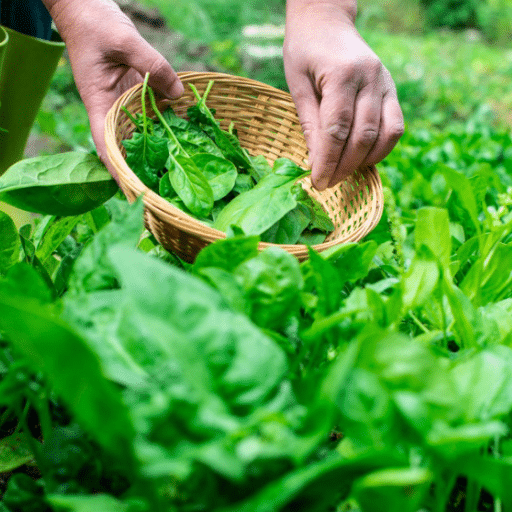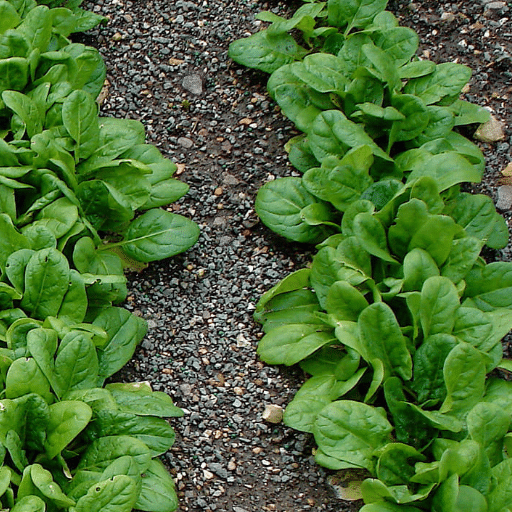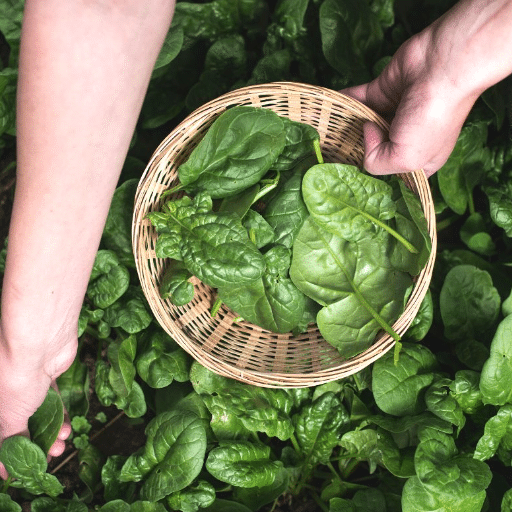Physical Address
304 North Cardinal St.
Dorchester Center, MA 02124
Physical Address
304 North Cardinal St.
Dorchester Center, MA 02124

Spinach is a multi-purpose, great value, and flourishing in different conditions green that has become a favorite not only to home gardeners but also to professional horticulturists. Whether you grow your spinach for salads, smoothies, or cooking, it is necessary to know the right way to grow and harvest this potent vegetable since that is the only way you can maximize your yield and the flavor at the same time. With this guide, you will get to know all about maturing good spinach and picking it just in time to be fresh and nutritious. You will learn from planting conditions through knowing the perfect time for harvesting how to apply practical and thorough tips which will be a great help for your gardening success. Get ready to change the way you grow spinach and with it enjoy the happiness of putting on your table colorful and fresh greens from your garden.

Spinach (Spinacia oleracea) is a quick-growing green vegetable that flourishes in cold weather. It is a member of the Amaranth family and the different varieties show smooth or crinkled leaves. This plant is very rich in nutrients like iron, calcium, and vitamins A, C, and K which is why it is considered by many to be a perfect candidate for home gardens. Spinach likes well-drained, rich-in-nutrients soil and has a pH that is neutral to slightly acidic (6.0-7.0), and watering should be done consistently for the plant to grow in its best condition. It is ideal to put the seeds of spinach in the ground early in spring or fall for the best harvests as it gets tired of the warm weather and wants to go on its life cycle by bolting. The right care and timing are the two things that turn your spinach from weak to strong harvests.
Spinach (Spinacia oleracea) is a flowering plant that can be consumed and classified under the Amaranthaceae family. It is an annual crop, and the plants are characterized by their dark green, ovate leaves which are arranged in a rosette pattern. The plants can reach a height of 12-18 inches depending on the type of the plant. Spinach is a dioecious species, which means that male and female flowers are borne on different plants, and the flowers that are mostly greenish, small, and inconspicuous are wind-pollinated. Due to its shallow root system, water management has to be done very carefully to avoid either stressing the plant or making it bolt. In fact, spinach is a cool-season crop and likes moderate temperatures which are very conducive for seed to germinate fast under good conditions.
For spinach to flourish, it must be fed with well-drained, nutrient-rich soil having a pH of 6.0 to 7.5. It can take full sun, but the plant’s leaves will still remain healthy in partial shade which is a condition that may help in cooler climates. Keeping the soil moist is very important because if it becomes too dry which means that swallowing will occur or if it is too wet then root rot will take place. It is also beneficial to fertilize spinach with nitrogen-rich compounds as this will support healthy leaf production and practicing crop rotation will prevent soil-borne diseases. Spinach growth is best at temperatures ranging from 35°F to 75°F so one can say that spring and fall planting when it is cool are the times spinach is most suited to be.
Spinach living beings have a specific life cycle that starts with seed germination, which usually takes 5 to 12 days when planted in a moist, well-drained soil under the temperature of 50°F to 68°F. After the germination, baby plants get their first real leaves in a week, meaning the vegetative growth stage is occurring where rapid leaf manufacturing is going on. This stage requires sufficient sunlight, consistent watering, and nutrient-rich soil for the plant to develop correctly. Depending on the variety, spinach matures roughly 40 to 50 days after sowing. The harvest usually takes place by firstly cutting the outer leaves which will stimulate continuous growth or by taking the whole plant. Post-harvest handling and storage are so important because they decide if the product will be fresh and of good quality or not.

Spinach harvesting should be done while the greens are big enough for salads but not too late to start yellowing or bolting. Baby spinach leaves can be cut when they are about 3 to 4 inches long, while mature spinach leaves should be assessed when the plant has made a full leaf circle, generally after 40 to 50 days from sowing. To keep the plant growing, it is better to take the outer leaves away than to pick the entire plant at once. For super quality, do the harvesting in the morning when the spinach is crisp and soft.
The signal for spinach harvesting is when its leaves not only have attained the required size but also are deep green, almost black. The length of 3 to 4 inches is perfect for baby spinach, while mature spinach forms a full, luxurious ruff of leaves usually after 40 to 50 days of growth. Spinach that has been matured too long would show the signs of being yellow, or worse, it could be that the plant has started to flower, which is so not going to be the case at our home as we want to have it in perfect flavor and texture. To make sure you get the best quality, harvest the leaves in the morning when they are freeze-thaw and softest. Harvest the outer leaves to keep the plant going for a longer period.
The pre-harvest period of spinach is when the leaves reach their full size but before the plant’s progress to bolting stage as this will negatively affect the resulting product’s flavor and texture. Maturity of spinach is reached in about 40 to 50 days, where it has a complete rosette of leaves. Observe your vegetables closely and act as soon as you see signs of yellowing or bolting, which means that it is time to harvest right away. To keep the productivity of the plant, do the harvesting at dawn when the leaves are firm and also pick the outermost leaves first to let the inner growth continue. This will guarantee maximum freshness and longer picking periods.
Bolting in spinach plants is an early and rapid switch from the development of leaves to flowering and seed formation, and it is mainly caused by environmental stress factors such as high light intensity, heat, or lack of water. As soon as this happens, the spinach leaves will not only lose their sweetness but also become hard, thus being unappetizing. Main indicators are the main stem’s swift growth, appearance of flower buds, and change of leaf shape to smaller and more pointed ones. One of the measures to prevent bolting in your garden is to grow spinach under cooler conditions, give them a regular water supply, and when possible choose varieties that are resistant to bolting. Detecting the bolting condition early and harvesting the affected plants immediately can help retain their usability before the quality declines.

When it comes to harvesting spinach, consistency is key. Pick the leaves of the plant that are mature, big, and healthy, and still be careful not to let them stay on the plant for too long as the older leaves can turn bitter. Then, carefully with a clean pair of scissors or garden shears, cut the leaves at the base, very close to the plant, and take the small, young leaves along with them so that they can continue growing. The best way to do this is to cut the whole plant about one inch above the soil so that it can regenerate if the conditions are right. For good flavor and texture, harvest in the early morning when the leaves are crispy and full of water. Continuous harvesting of spinach encourages the plant to keep producing.
Proper spinach leaf harvesting techniques are vital to both optimal leaf condition and plant longevity. Start by picking the largest, outer leaves, which are the oldest and most mature. You should use sanitized scissors or a gardening knife to trim the base of the leaves with clean cuts and thus support the continued growth of the inner, younger leaves. If doing a complete harvest, cut the plant down about an inch above the soil line, which will allow for regrowth if the conditions are right. The early morning is the best time for harvesting since it is when leaves are less dry and thus the flavor and texture are enhanced. The regular and systematic harvesting prevents the leaves from becoming tough and bitter with age and at the same time stimulates the plant to produce new foliage, which is now ready for future yields.
Whole plant harvesting means that the entire plant is cut at once, usually at a height just above the soil line. Though this method provides the most yield right away, it can be a limitation to the number of regrowths as the conditions need to be just right. In contrast, leaf harvesting allows for gradual picking of individual leaves over a period of time, which gives the plant the opportunity to go through its growth cycle and produce more. Whole plant harvesting is most suitable for crops that are at the end of their lifecycle whereas leaf harvesting is preferred when production is to be prolonged and plant health is to be maintained. The choice of method should depend on the species of plant, the stage of growth, and the purpose, while proper timing and technique should be applied to ensure that the yield and quality are at their best.
The choice of appropriate tools when harvesting spinach is important as it determines the smoothness of the process and the level of the plants’ damage. If the spinach harvesting is done in small quantities, a pair of sharp scissors or a shear is perfect for snipping leaves one by one without ripping and thus contributing to the overall health of the plant. In case of larger operations, the use of special harvesting knives, ergonomic hand tools for soft greens can greatly speed up the process and decrease the operator’s fatigue. Remember to have all tools sharp and clean before using them to avoid disease transmission and to ensure the quality of the harvest.

Start by getting rid of any broken or limp leaves when it comes to the storage of fresh spinach. Washing the spinach softly with cool water and then drying it very well using either a clean kitchen towel or a salad spinner is a good way to avoid the formation of moisture and thus the mildew. The spinach is then put in a bag made of perforated plastic which is breathable and placed in the refrigerator’s crisper drawer. If stored correctly, the spinach will be good for up to 5 to 7 days.
Fresh spinach can be used in salads, in sandwiches, and in smoothies; besides, it can be added to soups, stir-fried, or made omelettes. The brief cooking of spinach helps in retaining the nutrients and at the same time improving its flavor and texture.
In order to keep spinach fresh and rich in nutrients, always rinse it under cold water before putting it in a refrigerator to remove dirt and contaminants. Use salad spinner or clean kitchen towel to dry it completely, since moisture encourages spoilage. After drying, fill a loosely sealed perforated plastic bag or a container lined with paper towels to absorb the remaining moisture with the spinach. The place for such storage is in the crisper drawer of the refrigerator where the humidity is just right for leafy greens. Do not wash spinach before storage because added moisture will speed up deterioration. These practices guarantee that spinach remains fresh and fit for use for a whole week.
Fresh spinach is super flexible when it comes to cooking and nutrition. For a super easy and nutritious option, why not make spinach smoothies since it barely has any taste and it blends well with fruits like bananas and berries? You can add it to salads either as the main ingredient or together with other greens, and then mix with nuts, seeds, and a light vinaigrette for dressing. Also, you can cook spinach with garlic and olive oil for a very simple side dish, or add it to pasta, omelets, and soups for a nutrient boost. Besides, it can be used as a terrific ingredient in baked products like quiches, lasagnas, or even stuffed pastries. Thanks to its versatility, fresh spinach not only supports but also increases the number of recipes with the extra vitamins and minerals it contains.
Proper handling and storage of spinach are very important in keeping its freshness and nutritional value. Fresh spinach can be kept in the fridge if placed in a sealed container or a bag made of plastic with a dry paper towel in it to absorb the moisture which can cause wilting. For long-term preservation, spinach can be first blanched for a short time in boiling water and then quickly placed in an ice bath before being frozen. Blanching stops the enzymatic processes responsible for the spoilage while freezing keeps the spinach good for months. Use freezer bags or containers that are airtight to store the blanched spinach and try to remove as much air as you can to prevent freezer burn. These methods will make sure that spinach continues to be a versatile and nutrient-rich ingredient for your culinary endeavors in the future.
Harvesting spinach is the usual practice followed during its growth period, which generally lasts from the end of winter until the middle of summer. You may begin to reap the benefit of your efforts by the time the leaves are small and delicate (which is about 4 to 6 weeks after sowing the seeds). It is good to keep an eye on the leaves; when they get to around 4 to 6 inches tall, that is usually the good time to pick them. If you let them grow to full size, the hot weather will probably make them bitter by the time the process of bolting starts. Frequent checking of your spinach plants will assure you that you have picked them at the right time.
The best way to harvest spinach is with a cut-and-come-again method. The method involves trimming the outer leaves at the base of the plant so that the inner ones could be picked next time. This trick not only extends the duration of the harvest but also keeps the leaves tender. It is vital not to uproot the entire plant as this will prevent its regrowth. If you are careful with your harvesting, your spinach will be available for picking all winter long.
The main strategy to combat bolting in your spinach plants is to keep them cool, as spinach is a cool-weather vegetable that is related to beets and swiss chard. A good option could be planting heat resistant spinach varieties like Bloomsdale; some of them are less prone to bolting. Pay special attention to the watering as well; heat during late spring and summer stresses your plants and can lead them to bolt. If you notice your spinach is about to bolt, it’s better to snap off the outer leaves right away and thus secure your harvest before it turns to seeds.
The first step in spinach storage after harvesting is a gentle rinse of the leaves in cold water to remove any dirt and insects. Dry them with a clean towel or by using a salad spinner to get rid of the water. The best choice for spinach is to store it in a breathable container in the refrigerator where it can last for about a week. Besides, you can freeze the spinach to keep it fresh; briefly blanch the leaves before putting them in the airtight containers. Thus, it is possible to have the nutritional benefits of spinach, vitamin C included, even in the off-season.
The list of easy to grow spinach varieties is quite long, that is why they are the best choice for beginners. Bloomsdale is the name of a very popular variety with its tender leaves and the ability to tolerate heat better than its siblings. Besides, some types of spinach that are of indeterminate kind can even keep on growing after you have harvested them once, hence, they will be always there to supply you with fresh leaves. When it comes to choosing your spinach take into account the weather and season since some varieties are more frost-sensitive and grow better in the cool time of the year. Starting with young plants can increase your efficiency in growing spinach.